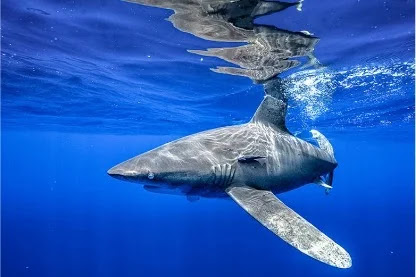' From Bottom Up '. In a search for breathing room, sharks looked higher : It sounds like something out of a Hollywood film script, but it really happened.
Shark evolution researchers say that increased ocean temperatures more than 100 million years ago may have caused sharks to grow bigger, swim faster and become the powerful predators we know today.
In a paper published in the journal Current Biology, scientists reported that they measured fin sizes and body lengths of 500 extinct and living sharks and compared that information with data from the evolutionary shark family tree.
Their results indicate that when the ocean got very hot approximately 122 million years ago during the Cretaceous period, some sharks abandoned their habitat on the seafloor and moved up into the open ocean.
That ascent may have altered their fin and body structure, which led to changes in their size and ability to swim.
It is a misconception that all sharks are like the bloodthirsty, powerful and streamlined beasts of '' JAWS '' that swim close to the ocean surface. Most sharks have always been benthic, meaning they're bottom feeders.
Unlike their pelagic relatives, - the ones that swim in open water - benthic sharks don't need to swim constantly to breathe. They can rest on the seafloor.
The need to breathe, however, might have been just the prompt that moved some sharks higher into the water column.
Cretaceous ocean bottoms may have become increasingly oxygen-poor in places. For the ancestors of many modern sharks to survive and thrive, it was time to ditch the sea bottom.
Clues to this habitat shift are seen in the changing pectoral fins of the ancient pelagic and benthic sharks. '' Most of the open-water sharks tend to have elongated fins, and the benthic sharks have stubbier fins,'' said Lars Schmitz, a biology professor at Claremont McKenna College in California who is an author of the paper.
His fellow author Philip Sternes, a shark researcher based in California, compared pectoral fins to wings on a plane.
'' Long narrow wings help your lift-to-drag ratio, so it lowers your cost of fuel,'' he said. In contrast, the '' short, stubby wings of fighter aircraft are not good for long-distance travel, but they can turn on a dime.'' [ Jeanne Timmons ].

.png)


0 comments:
Post a Comment
Grace A Comment!